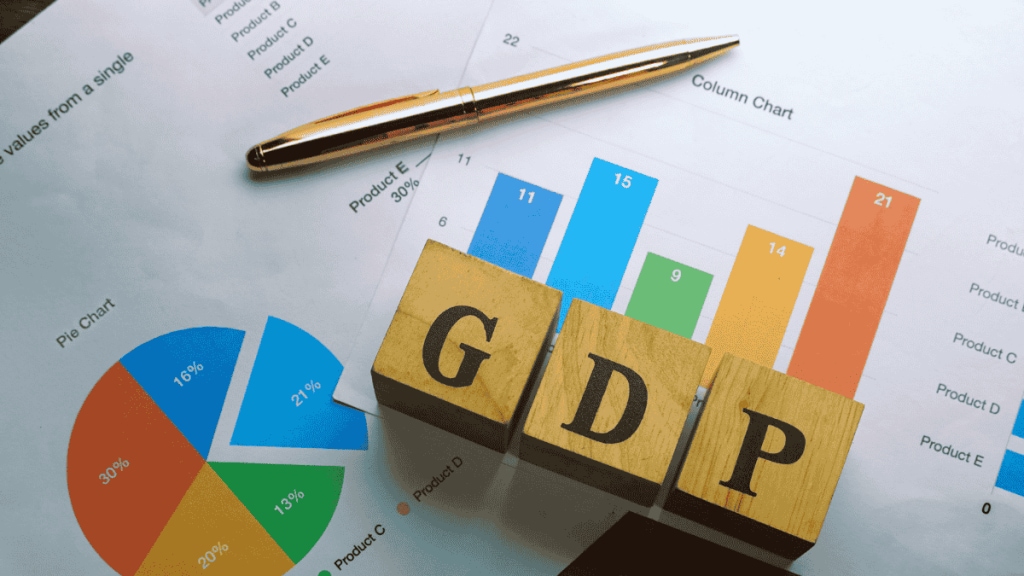By N R Bhanumurthy, Director, Madras School of Economics
Beating all the forecasts, GDP growth for Q2 of FY26 is estimated at 8.2%. This suggests the strongest upturn in the post-Covid period and most importantly this growth appears to be broad-based with secondary and tertiary sectors growing at 8.1% and 9.2%, respectively. Primary sector is to grow at 3.1% although with better monsoons and increased area under cultivation the final print could be higher. Decline in food prices and revival in rural demand do suggest an upward revision in agriculture growth.
For the first half of FY26, the Indian economy seems to have grown at a very impressive rate of 8%, thus, suggesting that for the whole year, we should expect a growth of 8% with upward risks for this estimate are higher compared to downside risks.
Drivers of the Growth Surprise and Policy Impact
What led to this increased optimism on GDP growth? Despite a mild moderation in the investment rate, from 35.2% to 34.8% between Q2 of FY25 and FY26, sharp rise in growth of manufacturing from 2.2% to 9.1% suggest an increased capacity utilisation.
As there is no clear evidence of significant expansion in private sector credit growth at least in the H1 of FY26, the Union government’s efforts in front-loading its capital expenditures and relaxing the norms for States in drawing from Centre’s interest-free capital loans appears to have played a major part in this growth surprise. Added to this, GST reforms that boosted demand (although in the last part of Q2) also seems to have increased capacity utilisation. Clearly the impact of US tariffs seem to have no impact at least in the H1 growth.
H2 Outlook
Going forward, in H2 of FY26 the optimism on Indian economic growth should be stronger than in H1.
Five reasons: the major impact of GST reforms is expected to be visible from October data and, as the post-festival demand trends suggest, and it could continue at least in next two to three quarters; government’s continued focus on capital expenditures lead to crowd-in private investments now on; with increased transmission of repo rate cuts on WALR as well as reduction in CRR the credit demand could pick up and there are indications that in the last two months credit growth is in double-digits; with inflation being low, RBI clearly has space for 50 basis points rate cut; and recent RBI’s decision to provide relief measures to domestic exporters to overcome US tariff shock could address concerns on the trade front. In addition to these factors, there are some signs of a US-India trade deal getting through in the near future and if and when it happens it could only add to India’s growth prospects.
There are some downside risks as well. The record high trade deficit in the month of October appears to be the beginning of negative impact due to US tariff hikes. Within that the sharp decline in exports growth at -11.8% while imports growth at 16.6%, suggest pressure points on the external sector. While gold/silver imports are a concern, sanctions on Russian oil companies could pose a major risk on the trade deficit. The Rupee/US dollar hitting a record low and some estimating a widening of Current Account Deficit closer to 2% by the end of FY26 only suggest a careful watch on the external sector.
The other concern is downward movement in the nominal GDP growth, which is estimated at 8.8% in H1, and is lower than the Union Budget’s assumption of 10.1%. This could have some implications on the revenue mobilisation if there is no improvement in the buoyancies following GST reforms. This could affect fiscal calculations.
This press release appears to be the last one with the 2011-12 base and in the next press release we will see the new series with 2022-23. It is noted that this press release did not indicate release of First Advance Estimates for FY26, which is normally released in the first week of January, for the use of Budget preparations. It is not clear if this is discontinued and may have a new release calendar for the new series. While we wait for this clarity, for now, let us cheer the growth numbers. But as discussed, H2 growth could be better and as they say picture abhi baaki hai!

